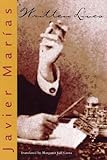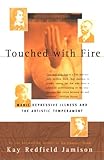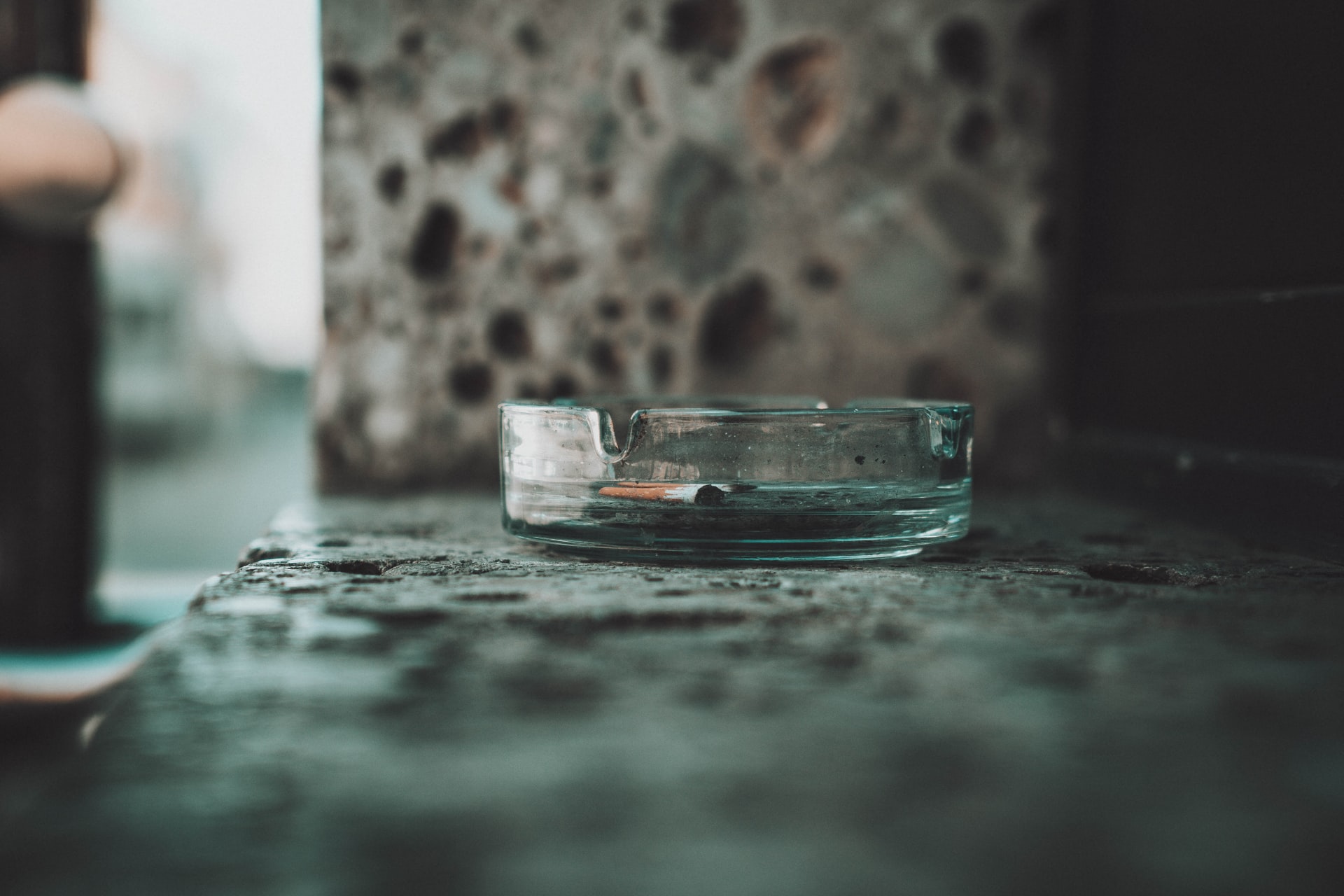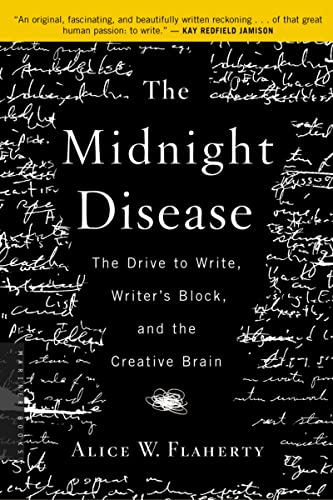1.
July 1 marked midsummer, and I found myself finally writing with some tailwind.
But school was out in mid-May. I had declined a couple of teaching opportunities (that is, income opportunities that I might wisely have accepted) in favor of the blank slate of a writing summer. I told myself that I needed the full days – writing, reading, research, rest – to make headway on my second novel. I needed to make progress; I’d been spinning my wheels for months; it was taking too damn long to “find” this book’s voice and shape.
I’d set goals and schedules. I went away for a few weeks, to a quiet rural place. I came back and started a mornings-at-the-library routine.
By late June, I’d gotten very little done.
Anxiety plagued me. Restlessness prevailed. I didn’t sleep well. I had tumultuous dreams where family members and people from my youth humiliated me over and over again. My chronic back pain became even more acute. My brain was foggy, my mood dark. I smoked and drank more than usual. My skin broke out (acne, really? At 38?), my teeth were yellowing. Generally speaking I wasn’t well. My mind, my spirit, my body, were all conspiring to thwart the productivity I had so coveted and envisioned. I generated words, filled a spiral notebook (I write drafts by hand), but I knew I’d likely trash most of it. Then the tailspin started. The voice in my head said, You can’t do this, you have neither the talent nor the mental strength (you have to have both, after all, and if you don’t, you should at least be able to fake one or the other). Look how you’ve shitted away all this precious time. Look at what a fraud you are. I started to wonder about a lot of things – life-purpose and self-worth sorts of things – that I’d rather not wonder about.
I didn’t want to see or talk to anyone, especially writers. I was embarrassed. Every so often I’d read lit blogs or log on to Facebook. Everyone seemed so happy and healthy and productive. Photos of newborns and kids on bikes, foodie meals, exotic travel; links to politically progressive articles (or regressive ones meant to incite our outrage), status updates thanking friends and spouses for their various kinds of wonderfulness, announcements about awards and publications with ensuing congratulatory comments.
The tailspin continued; a feeling of isolation deepened.
Where were all of the brooding, wretched, mentally unstable artists?
2.
I’ve been noticing for a while that health and happiness – a balanced, stable life – are “in.” The trend has been building for some time, and seems to coincide roughly with my generation, i.e., Gen X and younger, the college-educated children of baby boomers. What I find most interesting is that the trend seems to make no exception for writers and artists, historically the vanguard of counterculture.
There is a sense that we’ve been scared straight. Whereas previous generations of accomplished writers were awash in alcoholism and cigarettes, sexual-romantic openness (these days known as “promiscuity”), spiritual misery, and financial ruin, today’s young writers are more likely to faithfully drink 8-10 glasses of water daily, be married and/or monogamous (definitely married if there are children), get 7 to 8 hours of sleep each night (maybe even on a memory foam mattress), and have a decent credit score. Joan Acocella wrote in a 2004 New Yorker article about writers’ block:
In my observation, American writers today drink much less than their predecessors. I asked a psychoanalyst what they do instead, to take the edge off. “Exercise,” he said.
So sharp is the cultural turn toward health, that in an artists’ mecca like New York City, you can no longer smoke outside in public spaces without incurring a fine of $50 (the law seemed to pass with barely a shrug from New Yorkers).
Marriage and the nuclear family are increasingly standard among the young creative set. Recently I was talking with a young woman in her 20’s, the college-educated daughter of lefty artists (who raised her together but never married), and she mentioned how many weddings she’s gone to in the last few years. I asked her if most of her peers assumed they would get married for life and have children; she said, “Yeah, definitely. People are really fatigued from all the divorce and liberal weirdness they had to live through.” Her response interested me, because while the STD 80’s and tax benefits might be cited as drivers of the monogamy/marriage trend, she cited something more in the realm of the psycho-emotional.
To me, it’s an intriguing, and bizarre, progressive-regressive turnabout, like a puppy chasing its tail. In a recent New York Times article, “How Divorce Lost Its Groove,” Pamela Paul wrote:
That a woman [Susan Thomas, a Brooklyn-based writer] who has been divorced should feel such awkwardness and isolation seems more part of a Todd Haynes set piece than a scene from “families come in all shapes and sizes” New York, circa 2011. But divorce statistics, which have followed a steady downward slope since their 1980 peak, reveal another interesting trend: According to a 2010 study by the National Marriage Project at the University of Virginia, only 11 percent of college-educated Americans divorce within the first 10 years today, compared with almost 37 percent for the rest of the population.
This rings true in my experience. Most of my peers, friends, and colleagues are married or want-to-be. (There is lively debate about whether or not the recent marriage equality victory in New York state is in fact “progress” – isn’t marriage a fundamentally conservative institution? – but for the most part liberals do support equality of choice, a la pro-choice as opposed to pro-abortion.) When I tell people I’ve been married and unmarried, that I won’t be marrying my current partner, that I likely won’t be having children, they seem surprised, and mostly don’t know what to say; it’s a weirdly awkward moment. It’s as if I’m out-of-sync, I missed the memo about the new stability/happiness project, the new conservative progressivism, the generational pact. I rarely meet divorced people my age, and when I do, it feels like encountering a countryman in a foreign land.
 The Times article also cites Claire Dederer’s memoir, Poser, in which she writes:
The Times article also cites Claire Dederer’s memoir, Poser, in which she writes:
We made up our minds, my brother and I and so many of the grown children of the runaway moms, that we would put our families first and ourselves second. We would be good, all the time. We would stay married, no matter what, and drink organic milk.”
Well, I do drink organic milk.
3.
Joan Acocella’s list of writer-alcoholics (mostly taken from Tom Dardis’ The Thirsty Muse: Alcohol and the American Writer): Sinclair Lewis, Eugene O’Neill, Faulkner, Hemingway, Steinbeck (these five all Nobel Prize winners); Dashiell Hammett, F. Scott Fitzgerald, Edna St. Vincent Millay, Hart Crane, Thomas Wolfe, Dorothy Parker, Ring Lardner, Djuna Barnes, John O’Hara, Tennessee Williams, John Berryman, Carson McCullers, James Jones, John Cheever, Jean Stafford, Truman Capote, Raymond Carver, and James Agee.
 Additional examples abound of writers who struggled with madness, depression, substances – Theodore Roethke, Virginia Woolf, Sylvia Plath, Dylan Thomas, Charles Bukowski, Rimbaud, Pavese, von Kleist, John Kennedy Toole, Hunter S. Thompson, Jim Carroll, Spalding Gray, Anne Sexton, Sara Teasdale, Jack London, Robert Lowell, Marina Tsvetaeva, Jerzy Kosinski… one could go on and on in a kind of perverse parlor game (but then, this is the point: we don’t much play perverse parlor games anymore, do we?). Javier Marías writes in the introduction to his Written Lives, a gallery of mini biographies featuring 20 canonical authors: “[T]he one thing that leaps out when you read about these authors is that they were all fairly disastrous individuals […] their example is hardly likely to lure one along the path of letters.” Here is the opening to the vignette on Malcolm Lowry:
Additional examples abound of writers who struggled with madness, depression, substances – Theodore Roethke, Virginia Woolf, Sylvia Plath, Dylan Thomas, Charles Bukowski, Rimbaud, Pavese, von Kleist, John Kennedy Toole, Hunter S. Thompson, Jim Carroll, Spalding Gray, Anne Sexton, Sara Teasdale, Jack London, Robert Lowell, Marina Tsvetaeva, Jerzy Kosinski… one could go on and on in a kind of perverse parlor game (but then, this is the point: we don’t much play perverse parlor games anymore, do we?). Javier Marías writes in the introduction to his Written Lives, a gallery of mini biographies featuring 20 canonical authors: “[T]he one thing that leaps out when you read about these authors is that they were all fairly disastrous individuals […] their example is hardly likely to lure one along the path of letters.” Here is the opening to the vignette on Malcolm Lowry:
When Malcolm Lowry got into trouble in 1946 during his second stay in Mexico and, in an attempt not to be expelled from the country, asked the sub-chief of the Immigration department in Acapulco what there was against him from his previous visit in 1938, the government employee took out a file, tapped it with one finger and said, “Drunk, Drunk, Drunk. Here is your life.” These words are as brutal as they are exact, and perhaps, on more compassionate lips, the right word would have been “calamitous,” because Lowry does seem to have been the most calamitous writer in the whole history of literature, which is no mean feat, given the intense competition in the field.
4.
 Maud Newton has blogged frequently on the relationship between mental illness/neurosis and creativity, citing articles from Scientific American, Kay Redfield Jamison’s Touched With Fire: Manic-Depressive Illness and the Artistic Temperament, Alice W. Flaherty’s The Midnight Disease: The Drive to Write, Writers’ Block, and the Creative Brain, Hermione Lee’s Virginia Woolf, and Brian Dillon’s The Hypochondriacs as enlightening reading on the subject. In a 2009 post, she cites this passage from a Times article on Margaret Drabble:
Maud Newton has blogged frequently on the relationship between mental illness/neurosis and creativity, citing articles from Scientific American, Kay Redfield Jamison’s Touched With Fire: Manic-Depressive Illness and the Artistic Temperament, Alice W. Flaherty’s The Midnight Disease: The Drive to Write, Writers’ Block, and the Creative Brain, Hermione Lee’s Virginia Woolf, and Brian Dillon’s The Hypochondriacs as enlightening reading on the subject. In a 2009 post, she cites this passage from a Times article on Margaret Drabble:
[Drabble’s] own bouts [of depression] seem to feed her art — “happy and buoyant don’t force you into action on the page; you go shopping when you’re up” — and also force her to reassess things. “It’s useful,” she pointed out, “for stripping off ways of getting through life that prevent you from having to think.”
While both Jamison and Flaherty posit that there is a strong correlation between mood disorders/depression/melancholia and literary creativity, Flaherty suggests that manic depression stimulates the creative writing process, while plain old “unipolar” depression suppresses it (this coincides with Lee’s account of Virginia Woolf’s battle with depression, which did not stimulate but paralyzed her from working). Acocella also cites both Jamison and Flaherty: “Like Jamison, Flaherty thinks mood disorders may jump-start literary imagination […] But she goes further, speculating at length on which parts of the brain are responsible for literary creativity and its interruption.”
If there is truth to this correlation, then what to make of all this health and wellness? What to make, for instance, of psychiatry and psychotherapy – our standard-issue efforts to get mentally well – as they relate to creativity? Newton quotes a psychiatrist friend:
While it is true that we view depression as an affliction to be cured, it is not true that we feel this should be done in every case. The key test in mental illness is the effect on day-to-day functioning including employment, study and relationships.
I know a psychotherapist who sees a number of writers, and she shared with me that one of her clients asked to take a break from seeing her so that he could go away and write. The client said that there was something about talking out all of his anxieties, obsessions, and deep feelings that deflated his writing process. In other words, with so-called mental health and emotional clarity came a certain creative loss.
Even if the pressure of intense inner conflicts isn’t everything in the writing process, I’d say it’s significant. And tending to one’s mental health (with a professional, especially) can be depressurizing, by means of a kind of normalization: you describe and label your experiences; they become generic, predictable, just another case of X. You make explicit, and thus prosaic, all the unspoken richness of difficult thoughts and feelings, of the ineffable human conundrum that you are trying to manifest in your art. What felt painfully unique to you is now understood as quite common and not so problematic. And who wants — who needs — to write about that.
Years ago, a Jungian-influenced therapist encouraged me to practice “imaginative healing,” whereby I would re-imagine past traumatic experiences, revising them with a positive twist. I was resistant, and I realize now that to some degree a protective instinct had reared up; I needed all that imaginative energy – or at least I felt that I did – for writing fiction.
5.
How healthy is healthy? Isn’t creative productivity a sort of health in itself?
A recent exhibit at Tibor de Nagy gallery in New York featured collaborative works by painters and poets, “The New York School,” including John Ashbery, Frank O’Hara, Kenneth Koch, Joan Mitchell, Larry Rivers, Grace Hartigan, James Schuyler, Jane Freilicher, and Fairfield Porter. In the exhibition catalog, Jenni Quilter wrote about the nature of these rich and dynamic collaborations:
Friendships are amorphous creatures, prone to sprouting new limbs and self-amputating others, easily misidentified and disconcerting in the sudden strength and satiations of appetite. Their development is messy, and it’s this fluidity that allows projects to be easily proposed.
Nuclear families, active parenting, financial stability, “normal” social lives – these all require boundaries, schedules, relatively contained domestic environments. I wonder if in gaining health and stability, we aren’t losing some creative fluidity, the dynamism of messiness.
The milk I drink is organic, yes; it’s also raw – unpasteurized, non-homogenized. It is as yet undetermined – there are conflicting studies and opinions – whether this is the healthiest form of milk for humans to drink, or “high-risk.” (Perhaps it’s both.)
6.
But I am conflating the inner life with the outer life. Are melancholia and/or mental instability necessarily tied to public vices or outwardly messy/colorful lifestyles? Which leads me to the question: are we more mentally stable and happier than previous generations of writers, or do we just look like we are? Which is also to say, do we feel like we’re supposed to look like we are? Which is also to wonder, in this age of moment-to-moment self-revelation via social networking, are we in fact more private than we used to be about our true mental-emotional states?
 You get the feeling that in literary ages past, there was little need or effort to cover up either one’s vices or the mental troubles underlying: didn’t everyone know that Hemingway and Fitzgerald were heavy drinkers, that Virginia Woolf was deeply unhappy, that Sylvia and Ted (Hughes) were disastrous together? Perhaps people knew each other’s true states because they spent time together, in person; they congregated, in salons, cafes, colonies. You came as you were. But on Facebook, you compose your status, you present a manufactured version of yourself, your voice, your images. It occurs to me that I recoil from Facebook and Twitter partly because they feel to me like the Flanders household from The Simpsons, where everything is “okeley-dokeley!” — upbeat, positive, happy. Excited to eat this ramen! with accompanying photo, not Broke-ass and alone, vodka and blow for breakfast. (In a rare personal post recently, I myself shared a photo of our adorable new puppy; unconsciously I’d decided, this is what Facebook is for.)
You get the feeling that in literary ages past, there was little need or effort to cover up either one’s vices or the mental troubles underlying: didn’t everyone know that Hemingway and Fitzgerald were heavy drinkers, that Virginia Woolf was deeply unhappy, that Sylvia and Ted (Hughes) were disastrous together? Perhaps people knew each other’s true states because they spent time together, in person; they congregated, in salons, cafes, colonies. You came as you were. But on Facebook, you compose your status, you present a manufactured version of yourself, your voice, your images. It occurs to me that I recoil from Facebook and Twitter partly because they feel to me like the Flanders household from The Simpsons, where everything is “okeley-dokeley!” — upbeat, positive, happy. Excited to eat this ramen! with accompanying photo, not Broke-ass and alone, vodka and blow for breakfast. (In a rare personal post recently, I myself shared a photo of our adorable new puppy; unconsciously I’d decided, this is what Facebook is for.)
7.
Our relationship to literary stories of darkness, addiction, and psycho-emotional downward spiral is, I believe, in flux. Confessional memoirs, a la Mary Karr, Nick Flynn, Elizabeth Wurtzel, Andrew Solomon, Susanna Kaysen, Augusten Burroughs, Bill Clegg, et alia, now comprise an identifiable, marketable genre; indeed, the shame and stigma of confession have been lifted, we are grateful for the gritty truths of broken lives artfully laid bare. And yet, aren’t healing and insight the conditions? As consumers, we have manifest an appetite for the glamour of rock-bottom-to-recovery (not to mention the tragedy of rock-bottom-to-death, e.g., David Foster Wallace and, most recently, Amy Winehouse). But I suspect that, given the health trend, dysfunction-fatigue may set in soon, if it hasn’t already, and the genre will run its course. We will look upon these stories as specimens of an era gone by, in the same way that – as Katie Roiphe put it – we look upon raunchy sex writing from the Great Male Narcissists of yore – Mailer, Roth, Bellow, and Updike – with “fondness,” as examples of “a certain vanished grandeur.”
8.
In a recent article at The Awl about David Foster Wallace’s collection of self-help books, Maria Bustillos wrote:
[A]ll his life Wallace was praised and admired for being exceptional, but in order to accept treatment he had to first accept and then embrace the idea that he was a regular person who could be helped by “ordinary” means. Then he went to rehab and learned a ton of valuable things from “ordinary” people whom he would never have imagined would be in a position to teach him anything. Furthermore, these people obviously had inner lives and problems and ideas that were every bit as complex and vital as those of the most “sophisticated” and “exceptional.”
Even so there was still a lot of the “prodigy” in Wallace, something he hated in himself, not just something he mistrusted and had “gotten over.”
Wallace seemed to incarnate the past – a romantic, outmoded notion of a crazy genius artist – into our present. I wonder if he felt particularly despairing amidst his generation’s back-to-health zeitgeist, his estrangement from the “ordinary.” It appears that he tried and tried, but that he couldn’t get back to health. Couldn’t be normal, stable, happy. He was scared like the rest of us, but he would never ever be “straight.”
9.
I am not suggesting that it’s better – either romantic or grand – to be depressed, self-destructive, mentally unwell. But I think it’s possible to overrate both stability and happiness, to knee-jerk too far, to over-pasteurize one’s life, to buy into a pact without even knowing it. Health is a complex, unobvious state of being. For artists, creative productivity is a core element of health; pain and struggle are core elements of creative productivity; difficult pleasures necessarily take priority over predictability or placidity. I believe these are timeless truths. There is no great art without the messy, the fluid, the chaotic; the risky and the raw.
Image: Unsplash/Tim Hüfner.











